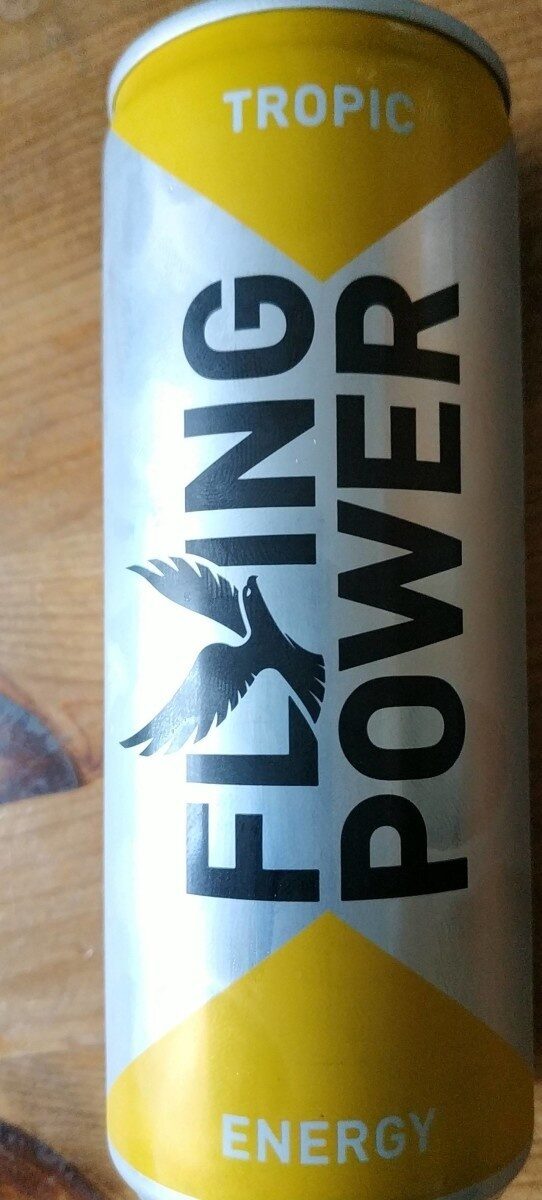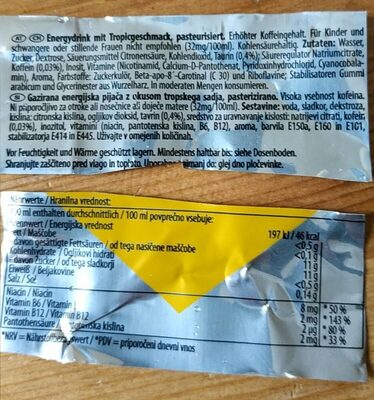Flying Power Tropic Energy - Spitz - 250ml
This product page is not complete. You can help to complete it by editing it and adding more data from the photos we have, or by taking more photos using the app for Android or iPhone/iPad. Thank you!
×
Barcode: 4099200025643 (EAN / EAN-13)
Common name: Energy Drink
Quantity: 250ml
Packaging: Can
Brands: Spitz
Categories: Beverages, Energy drinks
Origin of ingredients: de:Unbekannt
Manufacturing or processing places: A-4800 Attnang-Puchheim
Stores: Hofer
Countries where sold: Austria
Matching with your preferences
Environment
Packaging
Transportation
Report a problem
Data sources
Product added on by openfoodfacts-contributors
Last edit of product page on by kiliweb.
Product page also edited by chris82, ecoscore-impact-estimator, packbot, yuka.sY2b0xO6T85zoF3NwEKvlkZpTuDcqwjZaizmnlaGx8yxBJDmOP5j8KXxOas, yuka.sY2b0xO6T85zoF3NwEKvllBtT4fujCjGDRbUuUyI9tuVDr34OYB0-63cOqs, yuka.sY2b0xO6T85zoF3NwEKvllIcfNvXrAjWPkfli02Uw9nfFZPiOYpr67KlM6s, yuka.sY2b0xO6T85zoF3NwEKvllxBUuLFjRHnEx34g0bbmPSedqDMUO1P_IPfLKg.









